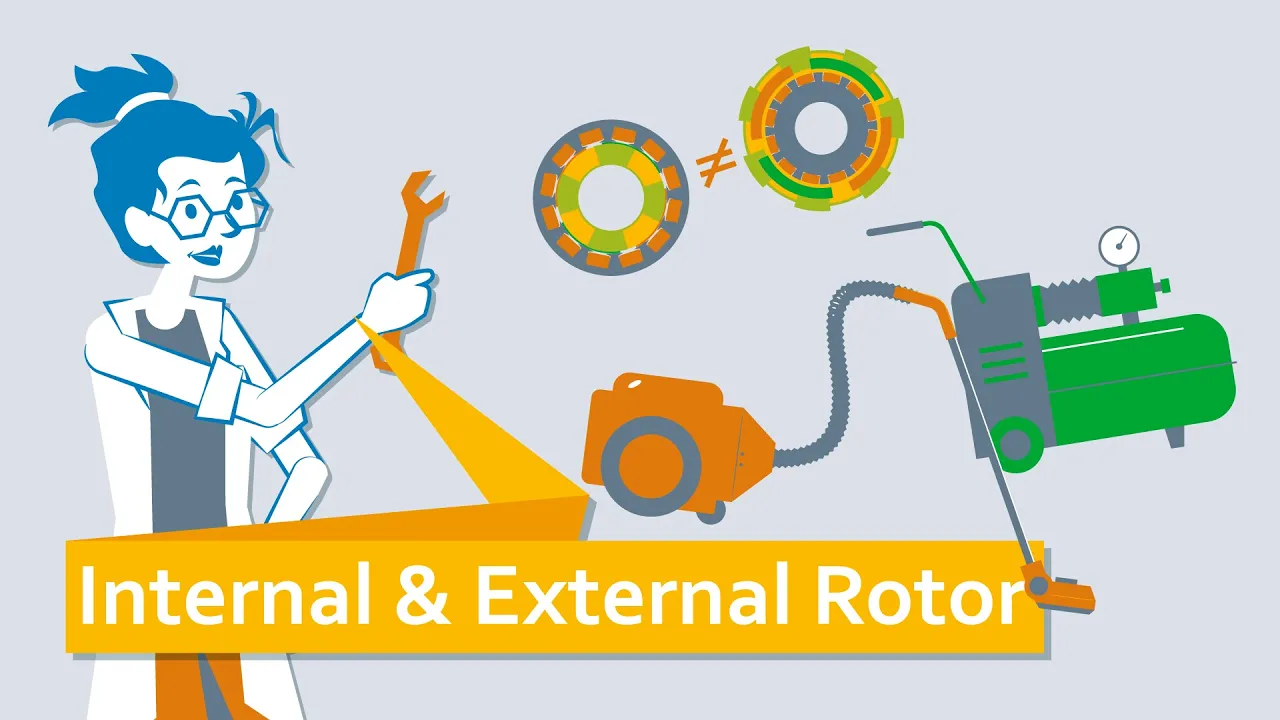There are different motors and in this video we look at the difference between internal and external rotor motors.
A motor is roughly made up of two components:
The stator is always the fixed and immovable part of the device. The stator generates a magnetic field through the current in its windings. This is induced in the rotor. The rotor now begins to move.
If it rotates inside the stator, this is referred to as an internal rotor motor. As these rotors have a smaller diameter, the power density is very high and the moment of inertia is low.
This makes the dynamics of these motors particularly attractive, as the speed and even direction of rotation can be changed in milliseconds, even at the high speeds that a motor like this achieves.
If the rotor rotates around the stator instead, this is referred to as an external rotor motor. The rotor is fitted with a magnetized ring. Therefore, instead of an axis, the cover or the magnetic ring itself rotates. Since more surfaces of the stator and rotor interact, this type of motor generates a high level of efficiency. This means a high motor power with low energy consumption.

Leave a comment